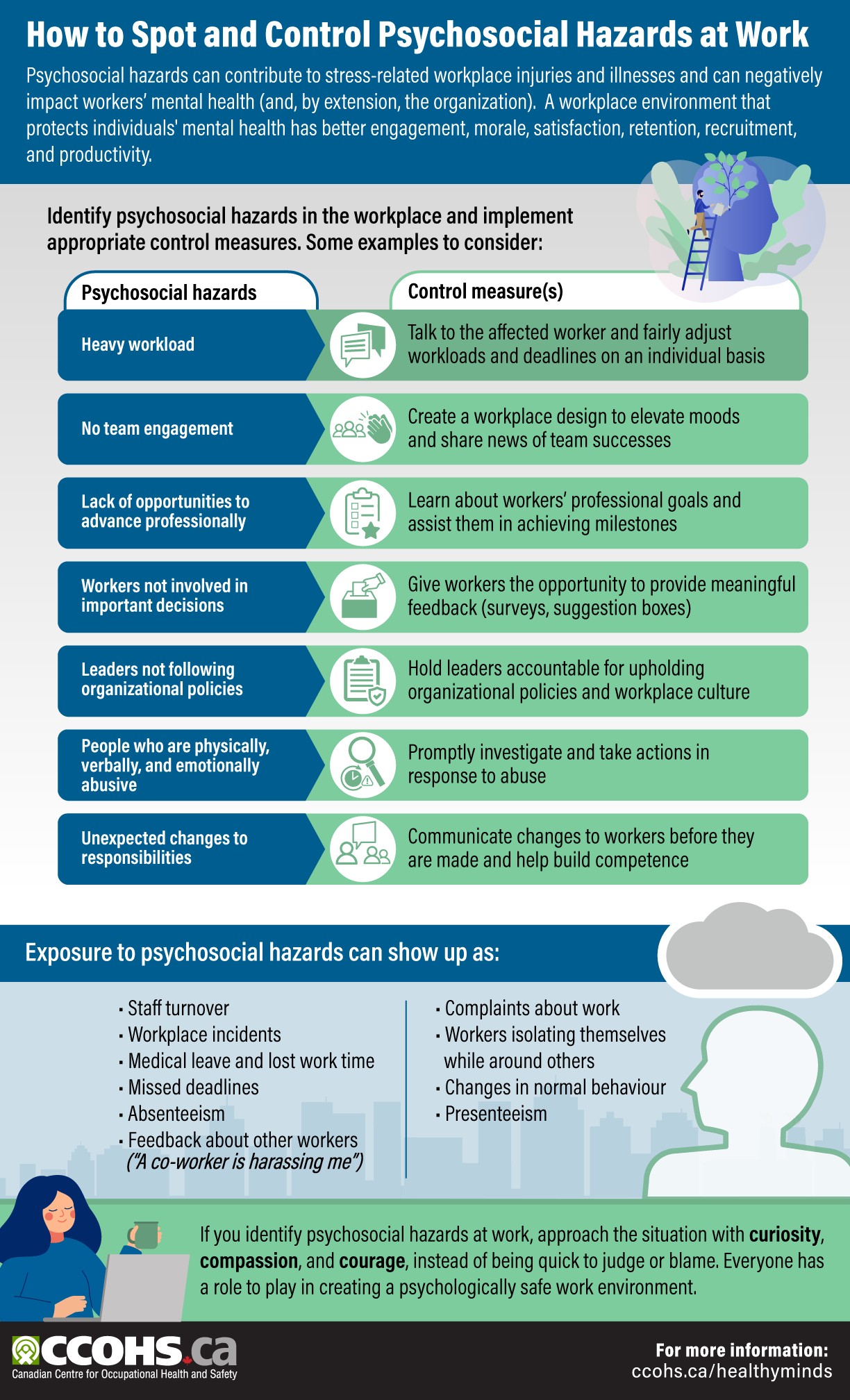Description: How to Spot and Control Psychosocial Hazards at Work

Description: How to Spot and Control Psychosocial Hazards at Work
Psychosocial hazards can contribute to stress-related workplace injuries and illnesses and can negatively impact workers’ mental health (and, by extension, the organization). A workplace environment that protects individuals' mental health has better engagement, morale, satisfaction, retention, recruitment, and productivity.
Identify psychosocial hazards in the workplace and implement appropriate control measures. Some examples to consider:
| Psychosocial hazards | Control measure(s) |
|---|---|
| Heavy workload | Talk to the affected worker and fairly adjust workloads and deadlines on an individual basis |
| No team engagement | Create a workplace design to elevate moods and share news of team successes |
| Lack of opportunities to advance professionally | Learn about workers’ professional goals and assist them in achieving milestones |
| Workers not involved in important decisions | Give workers the opportunity to provide meaningful feedback (surveys, suggestion boxes) |
| Leaders not following organizational policies | Hold leaders accountable for upholding organizational policies and workplace culture |
| People who are physically, verbally, and emotionally abusive | Promptly investigate and take actions in response to abuse |
| Unexpected changes to responsibilities | Communicate changes to workers before they are made and help build competence |
Exposure to psychosocial hazards can show up as:
- Staff turnover
- Workplace incidents
- Medical leave and lost work time
- Missed deadlines
- Absenteeism
- Feedback about other workers (“A co-worker is harassing me”)
- Complaints about work
- Workers isolating themselves while around others
- Changes in normal behaviour
- Presenteeism
If you identify psychosocial hazards at work, approach the situation with curiosity, compassion, and courage, instead of being quick to judge or blame. Everyone has a role to play in creating a psychologically safe work environment.
Document last updated on: 2024-03-07

